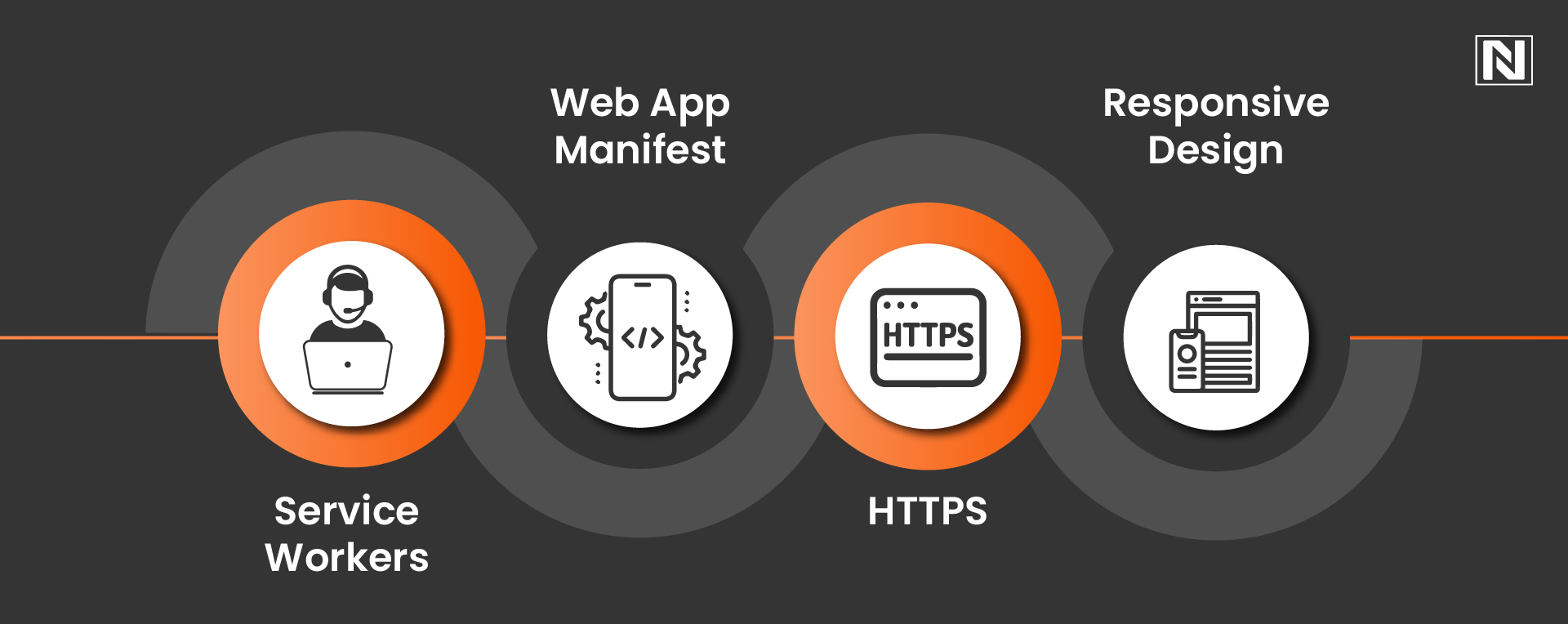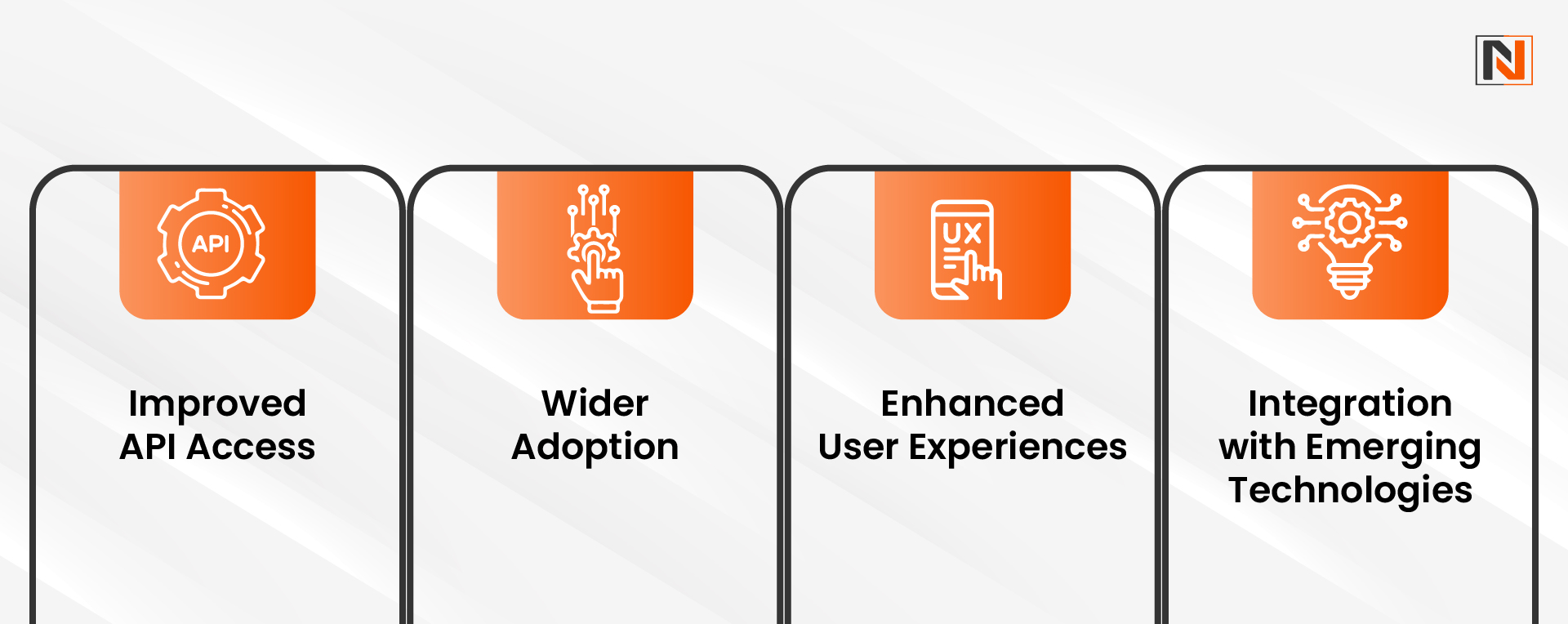
Imagine a website that feels as smooth and fast as a mobile app works even without an internet connection, and doesn’t take up storage on your phone. That’s the magic of Progressive Web Apps (PWAs). They’re the perfect blend of web and app technology, designed to deliver seamless user experiences across devices.
In this blog, we’ll explore PWAs, why they’re transforming how businesses engage users, and how they might be the future of digital interactions. Let’s get started!
What is a progressive web app?
A Progressive Web App (PWA) is an application built with web technologies like JavaScript, CSS, and HTML, designed to look and function like a standard web page. However, PWAs stand out by offering features similar to native mobile apps. They are easily discoverable through search engine results and can be shared via links. What makes them unique is their ability to work offline, send push notifications, and utilize device hardware, providing a seamless and app-like experience.
Key characteristics of Progressive Web Apps:
Progressive Web Apps (PWAs) are web applications that deliver an app-like experience using modern web technologies. Here are the key characteristics of PWAs:

1. Progressive Enhancement
Progressive Web Apps (PWAs) are designed with progressive enhancement in mind, ensuring functionality for all users, regardless of their browser or device. Users can enjoy additional features and improvements seamlessly as they upgrade to modern browsers or devices.
2. Responsive Design
PWAs are inherently responsive, adapting effortlessly to various screen sizes and orientations. This guarantees a uniform and enjoyable user experience accessed on a desktop, tablet, or smartphone.
3. App-Like Experience
PWAs deliver a highly app-like experience with smooth navigation, intuitive gestures, and seamless transitions. Leveraging application shell architecture, they load quickly and respond quickly to user interactions.
4. Offline Accessibility
A standout feature of PWAs is their ability to function offline or in areas with poor connectivity. This is enabled by service workers’ background scripts that manage network requests and cache essential content, ensuring basic functionality even without an internet connection.
5. Web App Manifest
The web app manifest, a JSON file, is central to PWAs. It contains metadata like the app’s name, icons, and starting URL, enabling users to install it on their devices. This creates an experience closer to native apps, complete with a home screen icon.
Supported by major tech giants like Google, Microsoft, and Apple, PWAs are transforming the web experience, bridging the gap between traditional web browsing and native mobile applications.
Did You Know?
According to Grand View Research, The global Progressive Web Apps (PWA) market earned USD 1,463.1 million in 2023 and is projected to grow to USD 9,425.9 million by 2030.
How Progressive Web Apps Work
Progressive Web Apps (PWAs) combine the best features of websites and native apps, offering a seamless user experience. They run in browsers but behave like traditional apps, delivering speed, reliability, and engagement. Here’s how they work:

- Service Workers: These scripts run in the background, handling caching and offline capabilities. They enable PWAs to load quickly, even on slow networks and allow offline access to pre-cached content.
- Web App Manifest: This JSON file provides metadata like app name, icons, and theme, enabling PWAs to be added to home screens for app-like access.
- HTTPS: PWAs require secure connections to ensure data integrity and user safety.
- Responsive Design: PWAs adapt to different devices and screen sizes, offering a consistent experience.
When users install a PWA, it integrates with their device, providing push notifications, offline features, and faster loading times without requiring app store downloads.
The Future of PWAs
The future of PWAs looks promising as technology continues to evolve. With browser capabilities and API advancements, the gap between PWAs and native apps is narrowing. Key trends shaping the future of PWAs include:

1. Improved API Access
Ongoing development of APIs like Web Bluetooth, Web NFC, and Web Payments is expected to expand the range of functionalities available to PWAs.
2. Wider Adoption
As businesses recognize the cost and engagement benefits of PWAs, adoption is expected to increase across industries.
3. Enhanced User Experiences
With improvements in performance, accessibility, and design, PWAs will continue to deliver better user experiences.
4. Integration with Emerging Technologies
PWAs will increasingly integrate with technologies like artificial intelligence (AI), augmented reality (AR), and the Internet of Things (IoT), opening up new possibilities for innovation.
Should Your Business Adopt a PWA?
Adopting a PWA might be the right move if your business is looking to improve user engagement, reduce development costs, and reach a broader audience. Here are a few considerations:
- User Base: If your audience includes users with limited internet access or low-end devices, a PWA can provide a seamless experience.
- Budget Constraints: For businesses unable to afford native app development, PWAs offer a cost-effective alternative.
- Engagement Goals: If re-engaging users is a priority, push notifications and offline functionality can be game-changers.
How Can Nirvana Lab Help You with Progressive Web Apps (PWAs)?
At Nirvana Lab, we create cutting-edge Progressive Web Apps (PWAs) that deliver enhanced performance, reliability, and user engagement. Our team ensures seamless integration with existing systems and provides an app-like experience that works across all devices. Whether your users are online or offline, we design PWAs that offer speed, responsiveness, and an intuitive interface. Let us help you reach and engage your audience more impactfully with our expert PWA development services.
Frequently Asked Questions
What is a Progressive Web App (PWA)?
A Progressive Web App (PWA) is a web application built with standard web technologies like JavaScript, HTML, and CSS but with features similar to mobile apps. PWAs work offline, send push notifications, and offer an app-like experience without requiring installation from an app store.
How do PWAs work offline?
PWAs use service workers’ background scripts that cache essential content and handle network requests. This allows the app to function without an internet connection, ensuring basic functionality even when connectivity is poor or unavailable.
What is a web app manifest in PWAs?
A web app manifest is a JSON file that contains metadata about the app, such as its name, icons, and starting URL. This allows users to install the PWA on their devices and provides an app-like experience, including a home screen icon and full-screen mode.
What are the benefits of adopting a PWA for my business?
Adopting a PWA helps improve user engagement, reduce development costs, and increase accessibility, especially for users with limited internet access or low-end devices. PWAs also provide a seamless, app-like experience with offline functionality and push notifications, making them a cost-effective alternative to native apps.
How can Nirvana Lab help with PWA development?
Nirvana Lab specializes in creating high-performance PWAs that deliver reliability, speed, and user engagement across all devices. Our expert team ensures seamless integration with your existing systems, providing an intuitive, app-like experience that works even offline, helping you engage users more effectively.